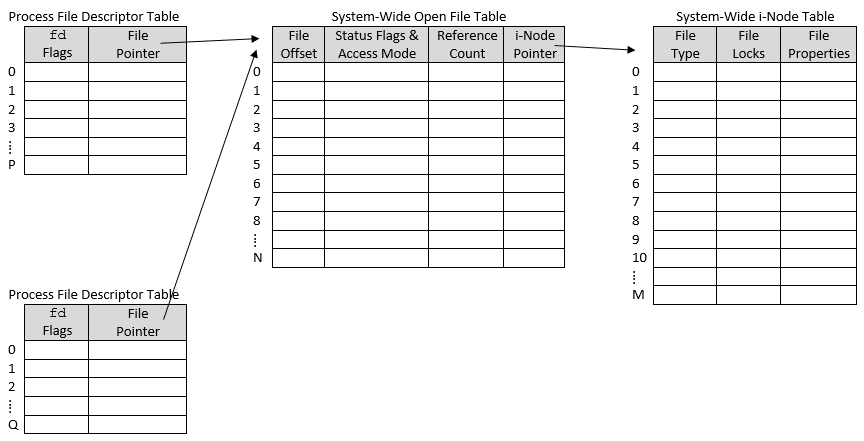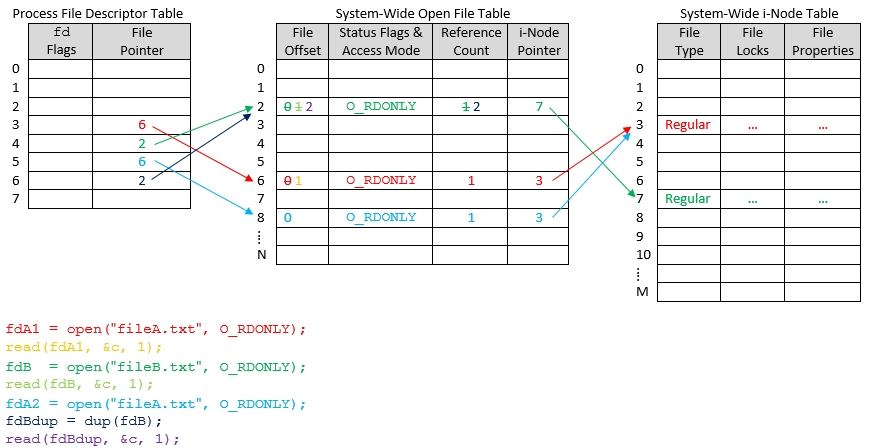|
UNIX File Descriptors
An Introduction |
|
Prof. David Bernstein |
| Computer Science Department |
| bernstdh@jmu.edu |
|
UNIX File Descriptors
An Introduction |
|
Prof. David Bernstein |
| Computer Science Department |
| bernstdh@jmu.edu |

dup())
open() is called multiple
times for the same file)errno
EBADF
|
fd isn't a valid open file descriptor |
EMFILE
|
The per-process limit has been reached |

/dev/fd:
/dev/fd/n
where n is one of the
process's open file descriptors/dev/fd is
equivalent to reopening the oritinal file/dev/fd is
equivalent to calling dup()
/dev/stdin, /dev/stdout, and
/dev/stderr are symbolic links to
/dev/fd/0, /dev/fd/1, and
/dev/fd/2
FILE*
not a file descriptorFILE* (i.e.,
stream) with a file descriptor